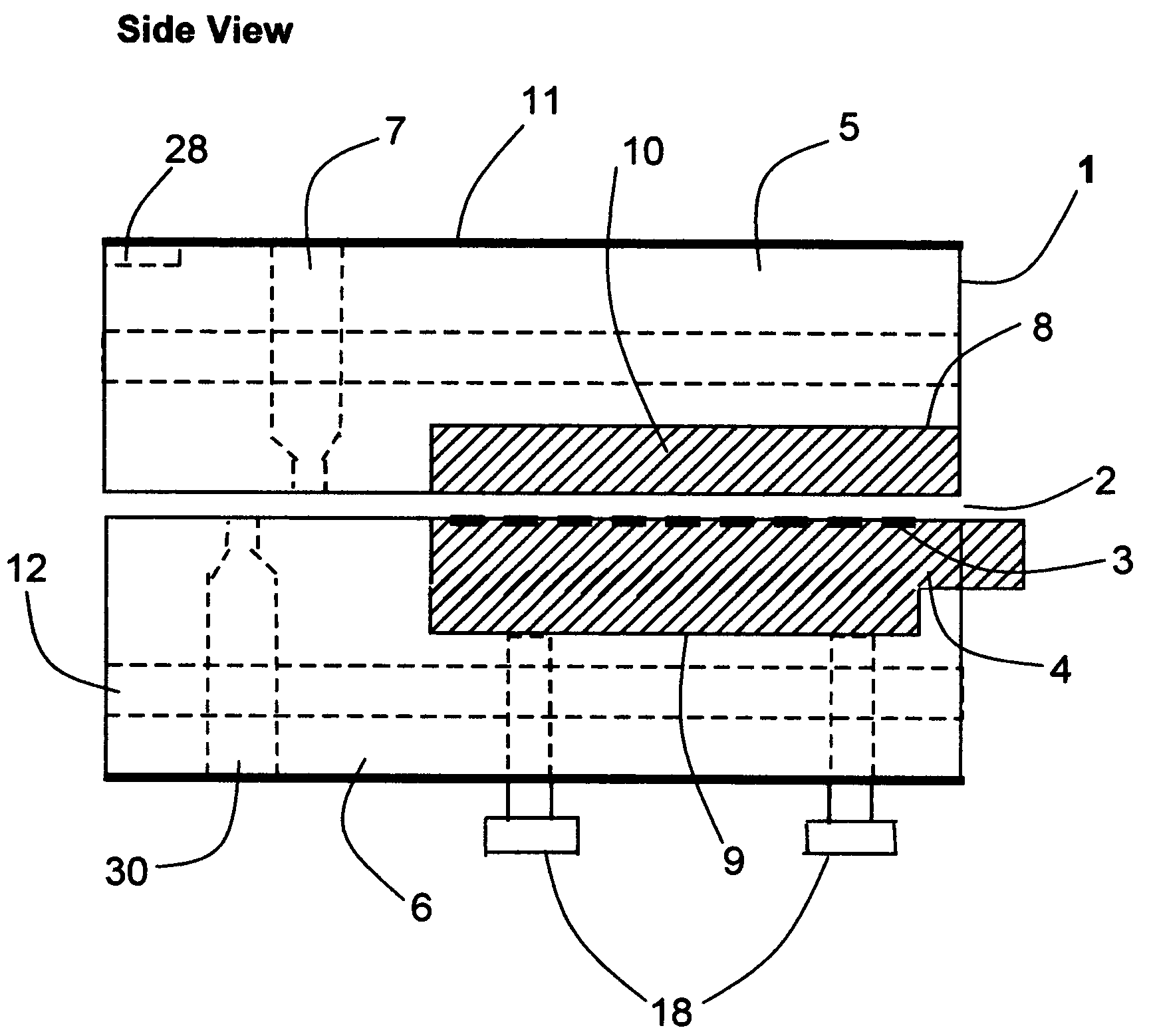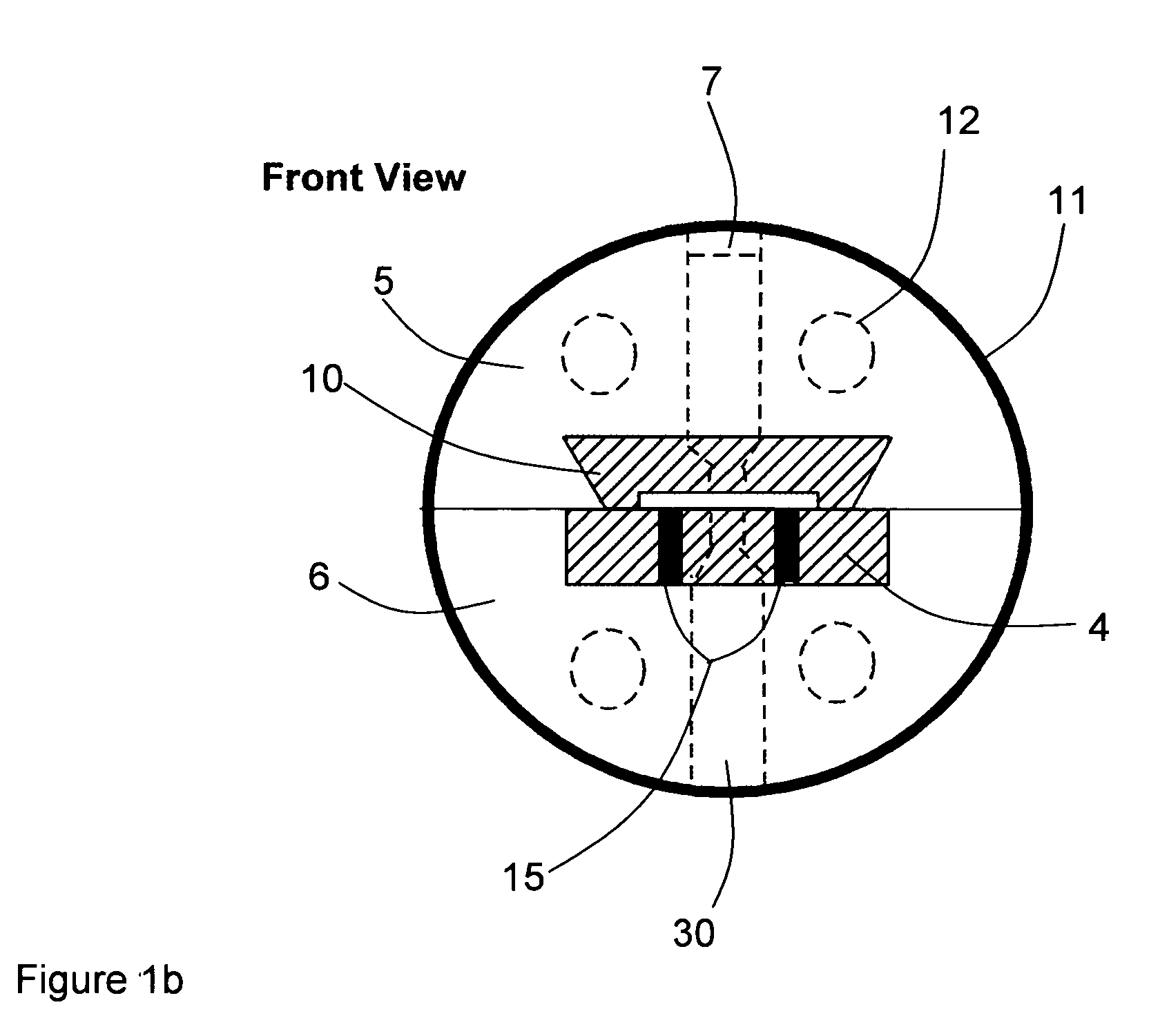Dielectric slit die for in-line monitoring of liquids processing
a technology of dielectric slit die and in-line monitoring, which is applied in the direction of direct flow property measurement, measurement devices, instruments, etc., can solve the problems of kranbuehl sensors, complex recipes, and time-consuming post-processing examinations
- Summary
- Abstract
- Description
- Claims
- Application Information
AI Technical Summary
Benefits of technology
Problems solved by technology
Method used
Image
Examples
example 1
[0041]To demonstrate the operation of the dielectric slit die, we show the results, in FIG. 8, of single screw compounding of nylon 12 with 4% smectite clay. FIGS. 8a and 8b show real-time data for extrusion of nylon 12 (neat) and for nylon 12 compounded with 4% clay. Compounding was carried out at 195° C. Relative permittivity and conductivity are plotted versus time for fifteen different frequencies ranging from 500 Hz to 100 kHz. At t=400 s, the neat polymer entered the electrode region of the dielectric sensor and was extruded for approximately 1500 s, at which time resin pellets mixed with 4% mass fraction of clay were added to the feeder. Permittivity and conductivity began to increase as the mixture filled the slit region, and after significant transition time, the data reached a plateau value. The transition is associated with time it takes the clay / polymer mixture to completely fill the sensing region, particularly at the surface near the electrodes. At t=4200 s, the neat r...
example 2
[0044]Real-time fluorescence monitoring is illustrated in FIG. 10. Here, polyethylene vinyl acetate copolymer, containing a low concentration of the fluorescent dye benzoxazolyl stilbene, was extruded through the slit and the fluorescence spectrum was detected using a monochromator as illustrated in FIG. 6. The spectra can be used to determine machine residence time and resin temperature.
PUM
 Login to View More
Login to View More Abstract
Description
Claims
Application Information
 Login to View More
Login to View More - R&D
- Intellectual Property
- Life Sciences
- Materials
- Tech Scout
- Unparalleled Data Quality
- Higher Quality Content
- 60% Fewer Hallucinations
Browse by: Latest US Patents, China's latest patents, Technical Efficacy Thesaurus, Application Domain, Technology Topic, Popular Technical Reports.
© 2025 PatSnap. All rights reserved.Legal|Privacy policy|Modern Slavery Act Transparency Statement|Sitemap|About US| Contact US: help@patsnap.com



